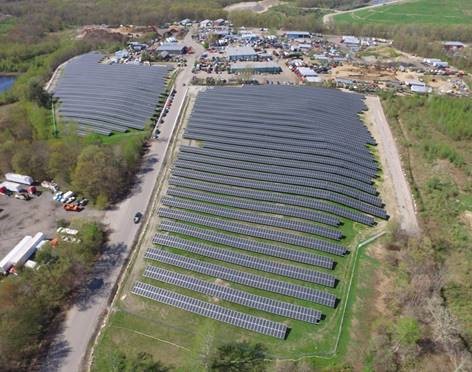PROVIDENCE – A bill that would have encouraged greater use of solar panels among Rhode Island’s commercial and industrial properties and another bill to better control where solar panels are located both died in the recent state legislative session.
A bill by Senate Majority Leader Michael McCaffrey, D-Warwick, would have expanded the state’s “virtual net metering” program to include commercial and industrial electricity users. The program already allows state and municipal users, hospitals and nonprofits to credit solar power generated offsite but still within Rhode Island against their electricity bills for up to 10 megawatts.
By allowing the private sector to take advantage of virtual net metering, the bill would have encouraged greater use of solar panels. However, there have been concerns about the spread of solar panels infringing on natural habitats, residential neighborhoods, and potential sites for new housing. The Senate approved the bill, but the House did not.
Another bill by Sen. Susan Sosnowski, D-New Shoreham, South Kingstown, would have required all Rhode Island cities and town to enact solar ordinances next year. The bill was initially intended to direct the development of solar panels to landfills, gravel pits, brownfields and other industrial sites, rather than having them built in open green space and other environmentally pristine land. Advocates call it “smart siting.”
However, those provisions of the bill were stripped away during the session and the version approved by the Senate only called for cities and town to adopt ordinances in an effort to better regulate development of solar panels. So far, about 20 Rhode Island municipalities already have adopted solar ordinances on their own.
Nevertheless, the House did not approve the bill and the General Assembly’s session ended last week without advancing the cause of better guiding development of solar panels so it doesn’t infringe on other concerns.
In recent years, Rhode Island has experienced a boom in the use of solar panels, so much so that it has been creating land use conflicts in the nation’s smallest state in terms of land size.
In March, the state Office of Energy Resources announced a new set of initiatives to encourage solar carports and solar projects located in brownfields.
“We have been listening to concerned citizens, business owners, farmers, cities and towns, and environmental advocates about the need to encourage solar development on preferred sites such as closed landfills, former gravel pits and parking areas,” said Rhode Island Energy Commissioner Carol Grant.
“We are pleased to announce the availability of funds for these special projects so that Rhode Island may continue adding new sources of renewable energy while preserving our forests and natural habitats,” Grant said.
Currently, Rhode Island generates about 151 megawatts of electricity from solar power, according to Chris Kearns, the Office of Energy Resources’ legislative and policy liaison.
The issue of locating the best sites for solar-panel arrays has put environmental groups into an unusual position. On the one hand, they want to encourage the use of clean, renewable energy. On the other hand, they want to preserve green space and other environmentally sensitive lands.
Erika Niedowski, Rhode Island executive director for The Acadia Center, said her group and other environmental advocates were disappointed that Sosnowski’s bill was “watered down” during the legislative process.
Niedowski said her group supports the expanded use of solar power but wants to direct it away from undeveloped land to preserve to those sites.
“Expanding access to solar power programs would be a big win for clean energy,” she said. “It can be very complicated. We want to guide that development into areas that will minimize the environmental impact.”
Scott Blake is a PBN staff writer. You may reach him at Blake@PBN.com.













